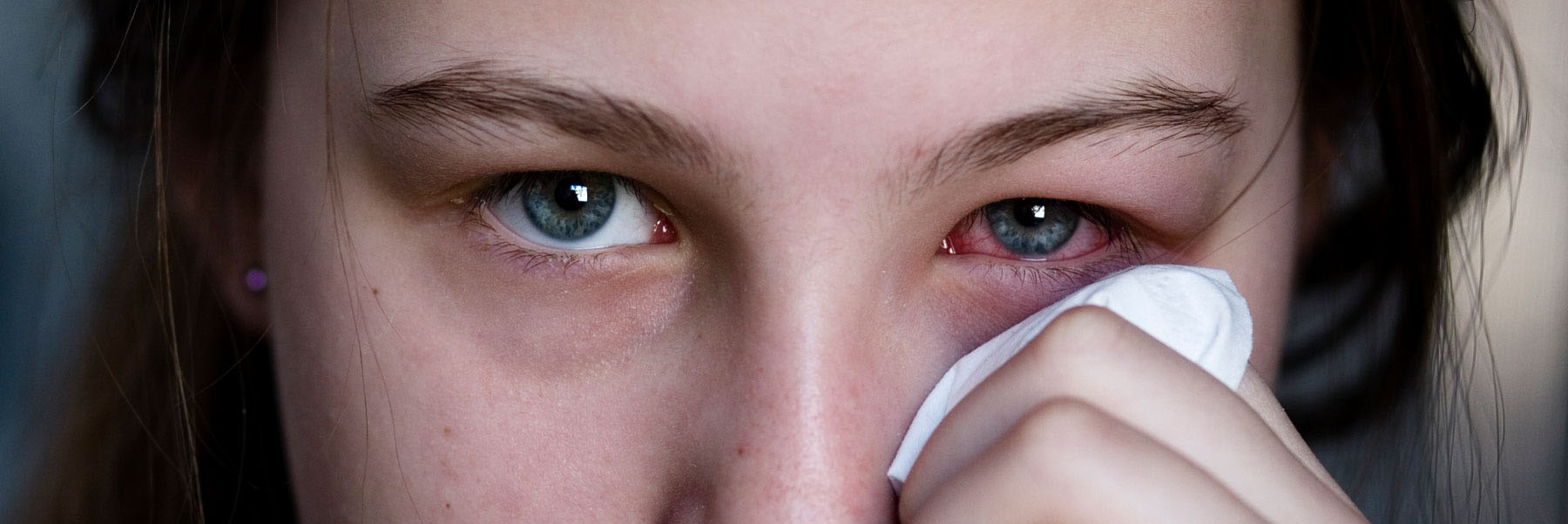Treating Pinkeye with Antibiotics Could Do More Harm Than Good

You’re probably familiar with the telltale signs of the highly contagious eye infection known as pinkeye — red, itchy, teary eyes that can last up to two weeks. While doctors often prescribe antibiotics to treat pinkeye (conjunctivitis), these medications probably aren’t needed and can actually lead to further health problems.
Pinkeye is typically caused by a virus (adenovirus or herpesvirus), and antibiotics are completely ineffective at clearing up viruses. Yet, doctors may prescribe antibiotics for pinkeye because a bacterial infection (such as Staphylococcus aureus, Streptococcus pneumonia or Haemophilus) is another less common cause. Pinkeye can also be the result of allergies to pollen, dust mites, mold or animal dander. Plus, irritants such as contact lenses and lens solution, swimming pool chlorine, air pollution and cosmetics may lead to conjunctivitis.
The challenge for pinkeye sufferers and their healthcare providers is determining the specific cause of the infection because, regardless of the source, the symptoms are very similar.
What’s the harm in taking antibiotics?
According to recent research, the use of antibiotics and antibiotic-corticosteroids (an antibiotic combined with an anti-inflammatory medication) for acute conjunctivitis is potentially harmful.
“Prescribing antibiotics and/or antibiotic/steroid combination therapy to ‘treat’ a self-limited viral conjunctivitis contributes to the very real problems of antibiotic resistance, rising health care costs and potentially harmful side effects,” explains Dr. Elena Roth, an ophthalmologist at the Bascom Palmer Eye Institute, part of the University of Miami Health System. “These side effects include prolonged viral infection, toxicity to the surface of the eye and even glaucoma.”
Determining the cause of pinkeye
The type of conjunctivitis (viral, bacterial, allergic or irritant) can sometimes be determined by an ophthalmologic assessment of the symptoms.
- If the eye infection is watery in both eyes and is accompanied by a cold or respiratory infection, then it’s most likely a case of viral pinkeye.
- Bacterial pinkeye tends to occur in just one eye and may be accompanied by eye pus and an ear infection.
- Allergic conjunctivitis tends to be seasonal and occurs in both eyes with intense itching. Because it’s caused by allergies, this type of pinkeye typically accompanies an itchy nose, sneezing and scratchy throat.
- Pinkeye caused by an irritant may be simple to diagnose because the infection often clears up just by eliminating exposure to the irritant. Contact lens wearers who develop conjunctivitis should stop using them until the infection is resolved.
The patient’s health history (including recent exposure to someone with pinkeye, a weakened immune system, diabetes, a history of seasonal allergies or contact with an eye irritant) can also help a doctor determine the cause of the infection.
There’s usually no need for laboratory tests, unless the patient’s symptoms and medical history suggests the conjunctivitis is more serious and indeed bacterial. If that’s the case, a sample of infected eye discharge can be tested for the presence of bacteria.
Treating pinkeye without antibiotics
Pinkeye caused by a virus, allergy or irritant typically clears up within two weeks without the use of any medication. Such patients can help relieve the symptoms of the infection by using artificial tears for the dryness and cold packs for the inflammation.
“Allowing the virus to run its course, along with lubricating drops and frequent hand washing, is the standard of care for viral conjunctivitis,” says Dr. Roth.
If you’re prescribed an antibiotic to treat pinkeye, ask your health care provider how he or she determined that bacteria are the cause of the infection. Laboratory testing may be used to confirm this diagnosis.
Dana Kantrowitz is a contributing writer for the UMiami Health News blog.
Tags: adenovirus, Bascom Palmer Eye Institute, conjunctivitis, Dr. Elena Roth, opthalmology, pink eye
